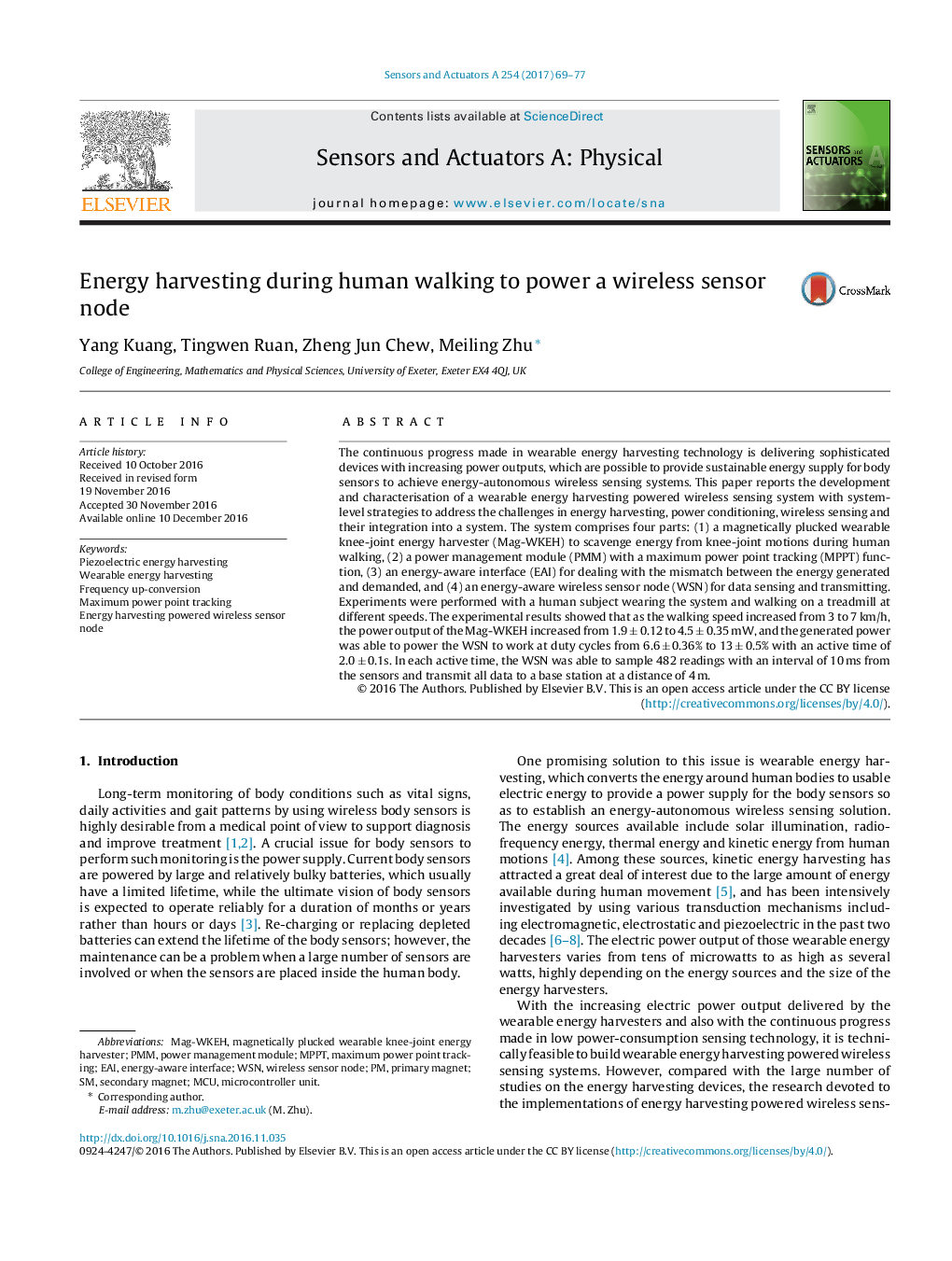| کد مقاله | کد نشریه | سال انتشار | مقاله انگلیسی | نسخه تمام متن |
|---|---|---|---|---|
| 5008333 | 1461846 | 2017 | 9 صفحه PDF | دانلود رایگان |
- A wearable energy harvesting powered wireless sensing system is developed.
- Magnetic plucking technique is used for wearable knee-joint energy harvesting.
- Power conditioning circuit features maximum power point tracking.
- A wireless sensor node with energy-awareness is developed.
- Performance of the system is tested under real-word settings.
The continuous progress made in wearable energy harvesting technology is delivering sophisticated devices with increasing power outputs, which are possible to provide sustainable energy supply for body sensors to achieve energy-autonomous wireless sensing systems. This paper reports the development and characterisation of a wearable energy harvesting powered wireless sensing system with system-level strategies to address the challenges in energy harvesting, power conditioning, wireless sensing and their integration into a system. The system comprises four parts: (1) a magnetically plucked wearable knee-joint energy harvester (Mag-WKEH) to scavenge energy from knee-joint motions during human walking, (2) a power management module (PMM) with a maximum power point tracking (MPPT) function, (3) an energy-aware interface (EAI) for dealing with the mismatch between the energy generated and demanded, and (4) an energy-aware wireless sensor node (WSN) for data sensing and transmitting. Experiments were performed with a human subject wearing the system and walking on a treadmill at different speeds. The experimental results showed that as the walking speed increased from 3 to 7 km/h, the power output of the Mag-WKEH increased from 1.9 ± 0.12 to 4.5 ± 0.35 mW, and the generated power was able to power the WSN to work at duty cycles from 6.6 ± 0.36% to 13 ± 0.5% with an active time of 2.0 ± 0.1s. In each active time, the WSN was able to sample 482 readings with an interval of 10 ms from the sensors and transmit all data to a base station at a distance of 4 m.
Journal: Sensors and Actuators A: Physical - Volume 254, 1 February 2017, Pages 69-77
